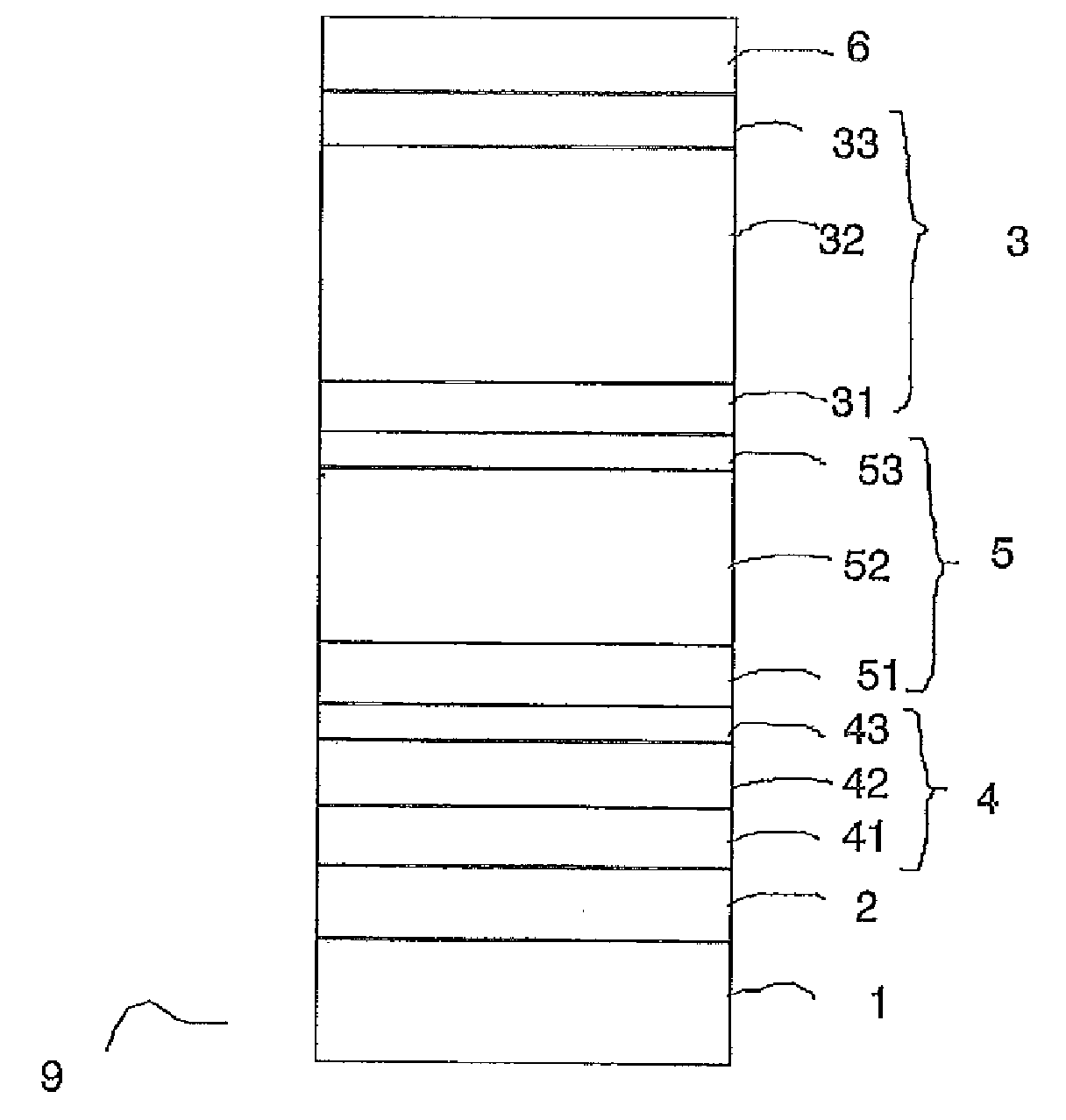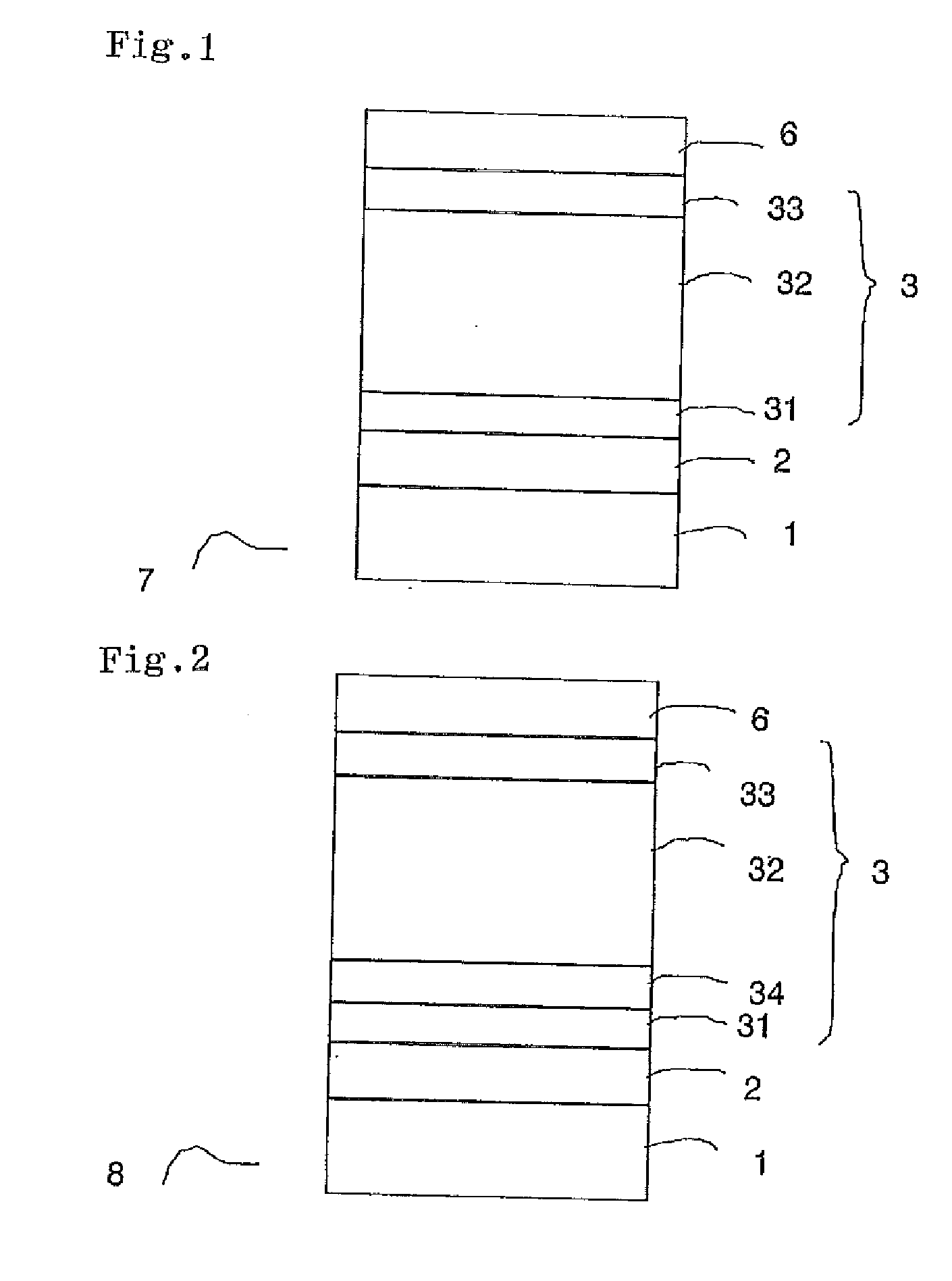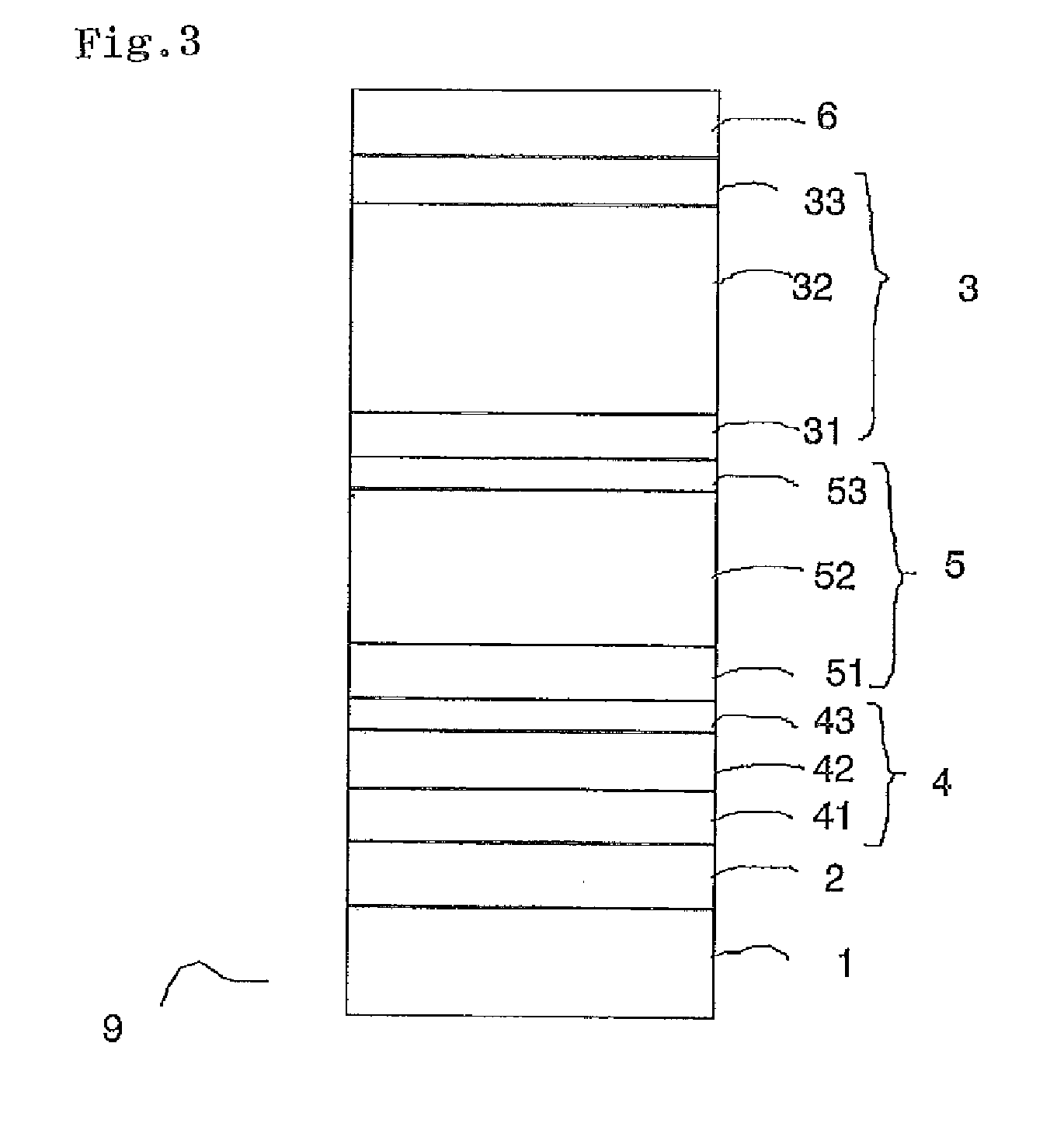Thin-film photoelectric converter and fabrication method therefor
- Summary
- Abstract
- Description
- Claims
- Application Information
AI Technical Summary
Benefits of technology
Problems solved by technology
Method used
Image
Examples
example 1
[0121]A single-junction thin-film photoelectric converter 7 having a structure shown in FIG. 1 was manufactured as Example 1. As a transparent substrate 1, a glass substrate having a thickness of 0.7 mm was used. On the transparent substrate 1, an SnO2 film having an average thickness of 700 nm, with fine pyramid-shaped surface irregularities contained therein, was formed by a thermal CVD method. Further, a ZnO film doped with Al was formed thereon with a thickness of 20 nm by using a sputtering method so that a transparent electrode layer 2 in which SnO2 and ZnO were stacked was formed. The resulting transparent electrode layer 2 had a sheet resistivity of about 9 Ω / square. The haze ratio measured by using a illuminant C was 12%, and an average level difference d of the surface irregularities was about 100 nm. The haze ratio was measured based upon JIS K7136.
[0122]On this transparent electrode layer 2, a crystalline germanium photoelectric conversion unit 3 was manufactured by usin...
example 2
[0133]As Example 2, a single-junction thin-film photoelectric converter similar to that of Example 1 was manufactured. The converter of Example 2 was manufactured in the same manner as in Example 1, except that the crystalline germanium photoelectric conversion layer of FIG. 1 was formed at 400° C.
[0134]An absorption coefficient at a wavelength of 1300 nm, measured in the same manner as in Example 1, was 1620 cm−1, which exhibited a high absorption coefficient relative to light with long wavelengths. An X-ray diffraction spectrum is shown in FIG. 4. A particularly strong peak in (220) orientation is observed so that its crystallization state was confirmed. The peak intensity ratio of (220) / (111) was 91. The crystal grain size found by a half-value width of the (220) peak was 51 nm. A Raman scattering spectrum is shown in FIG. 5. A sharp peak in a TO mode of a crystal Ge—Ge bond was observed near 300 cm−1, thereby indicating a crystallization.
[0135]As shown in FIG. 8, although the in...
examples 1 and 2
Summary of Examples 1 and 2 and Comparative Example 1
[0137]In Example 2, no absorption peaks were observed at infrared rays of 935 cm−1 and 960 cm−1, the quantum efficiency of long wavelengths had a high value exceeding 10%, and the Jsc had a high value exceeding 30 mA / cm2. It is considered that the reason why the Eff was slightly lower than that of Example 1 is because diffusion of impurities occurred between the p-type layer and the crystalline germanium layer due to a high film-deposition temperature caused by the reduction in Voc and FF. In each of Examples 1 and 2 and Comparative Example 1, the Raman scattering spectrum of the crystalline germanium layer indicated a crystallization, and no remarkable difference was confirmed. In contrast, with respect to the infrared-absorption peaks at 935 cm−1 and 960 cm−1 and (220) / (111) peak intensity ratio of the X-ray diffraction, remarkable differences were observed; thus, it was found that upon determining the quality of the crystalline...
PUM
 Login to View More
Login to View More Abstract
Description
Claims
Application Information
 Login to View More
Login to View More - R&D
- Intellectual Property
- Life Sciences
- Materials
- Tech Scout
- Unparalleled Data Quality
- Higher Quality Content
- 60% Fewer Hallucinations
Browse by: Latest US Patents, China's latest patents, Technical Efficacy Thesaurus, Application Domain, Technology Topic, Popular Technical Reports.
© 2025 PatSnap. All rights reserved.Legal|Privacy policy|Modern Slavery Act Transparency Statement|Sitemap|About US| Contact US: help@patsnap.com



